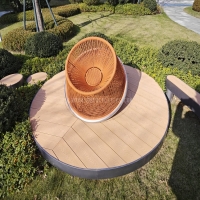Welcome to the website for landscape facilities products and knowledge.
What are the key differences between using bamboo versus traditional wood for landscape tables?
When choosing materials for landscape tables, bamboo and traditional wood are two popular options, each with distinct advantages. Bamboo is a highly sustainable resource, growing much faster than traditional hardwoods, making it an eco-friendly choice. It is also naturally resistant to pests and moisture, which enhances its durability in outdoor settings. However, bamboo can be more expensive due to processing costs.
Traditional wood, such as teak or cedar, offers a classic aesthetic and is often more affordable upfront. While some hardwoods are naturally durable, others require chemical treatments to resist rot and insects, which may raise environmental concerns. Over time, untreated wood may warp or crack under harsh weather conditions.
In terms of maintenance, bamboo typically requires less upkeep than traditional wood, though both benefit from periodic sealing. Bamboo’s lightweight nature makes it easier to move, while hardwood tables are generally heavier and more stable.
Ultimately, the choice depends on priorities: bamboo excels in sustainability and low maintenance, while traditional wood offers timeless appeal and varying price points. Both materials can create beautiful, functional landscape tables when selected wisely.
Related search:

Recommendation
Swivel chair-Specialty steel structure woven rattan leisure chair with rotatable design